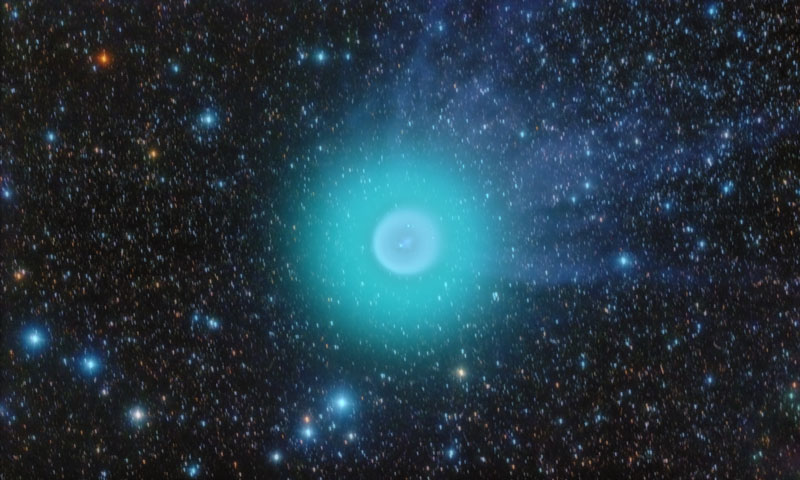sup Holmes
Posted: 30 Oct 2007, 18:38
Rare Event: Easy-to-See Comet Holmes
By Joe Rao
posted: 30 October 2007
11:56 am ET
Only a couple comets each decade are this easy to see.
Skywatchers throughout the Northern Hemisphere report the newly visible Comet Holmes is a remarkable sight even under city lights. The comet, described in glowing terms by many observers, should continue to be visible to the naked eye for at least the next few weeks.
Holmes , is actually an old comet. First seen in November 1892 by British observer Edwin Holmes, it has since made 16 circuits around the Sun and should have fizzled out a long time ago. It made its closest approach to the Sun last May, yet never came closer to it than 191 million miles (307 million kilometers). The comet is actually moving away from the sun now, almost midway between the orbits of Mars and Jupiter. Not exactly a recipe for an outbust, since solar heating is typically what triggers comets to brighten.
But sometime late last Tuesday, Oct. 23, this comet underwent an explosive outburst and within just 24-hours increased its brightness almost a million-fold. Since then, Holmes has been putting on a unique display, looking very different than any other comet of our generation: It has yet to sprout a noticeable tail, while its head—called the coma—appears like a round, yellowish fuzz ball in the constellation Perseus, and is visible for most of the night.
Use the "W" as a guide
You can find Comet Holmes by using the "W" of Cassiopeia as your guide [map]. The five stars in a conspicuous zigzag pattern are high in the northeast sky during the mid-evening hours.
Draw an imaginary line from the star Gamma Cass down to Delta Cass (known also as Ruchbah). Extend the line downward about five times the distance between these two stars and you'll come very close to where Comet Holmes is. The comet itself forms a triangle with Alpha Persei (known also as "Mirfak") and Delta Persei.
If you have binoculars, you'll know the comet immediately when you see it: a small, albeit distinct, circular lemon-yellow cloud of light. A small telescope will help bring out the fuzzy details.
By Joe Rao
posted: 30 October 2007
11:56 am ET
Only a couple comets each decade are this easy to see.
Skywatchers throughout the Northern Hemisphere report the newly visible Comet Holmes is a remarkable sight even under city lights. The comet, described in glowing terms by many observers, should continue to be visible to the naked eye for at least the next few weeks.
Holmes , is actually an old comet. First seen in November 1892 by British observer Edwin Holmes, it has since made 16 circuits around the Sun and should have fizzled out a long time ago. It made its closest approach to the Sun last May, yet never came closer to it than 191 million miles (307 million kilometers). The comet is actually moving away from the sun now, almost midway between the orbits of Mars and Jupiter. Not exactly a recipe for an outbust, since solar heating is typically what triggers comets to brighten.
But sometime late last Tuesday, Oct. 23, this comet underwent an explosive outburst and within just 24-hours increased its brightness almost a million-fold. Since then, Holmes has been putting on a unique display, looking very different than any other comet of our generation: It has yet to sprout a noticeable tail, while its head—called the coma—appears like a round, yellowish fuzz ball in the constellation Perseus, and is visible for most of the night.
Use the "W" as a guide
You can find Comet Holmes by using the "W" of Cassiopeia as your guide [map]. The five stars in a conspicuous zigzag pattern are high in the northeast sky during the mid-evening hours.
Draw an imaginary line from the star Gamma Cass down to Delta Cass (known also as Ruchbah). Extend the line downward about five times the distance between these two stars and you'll come very close to where Comet Holmes is. The comet itself forms a triangle with Alpha Persei (known also as "Mirfak") and Delta Persei.
If you have binoculars, you'll know the comet immediately when you see it: a small, albeit distinct, circular lemon-yellow cloud of light. A small telescope will help bring out the fuzzy details.


